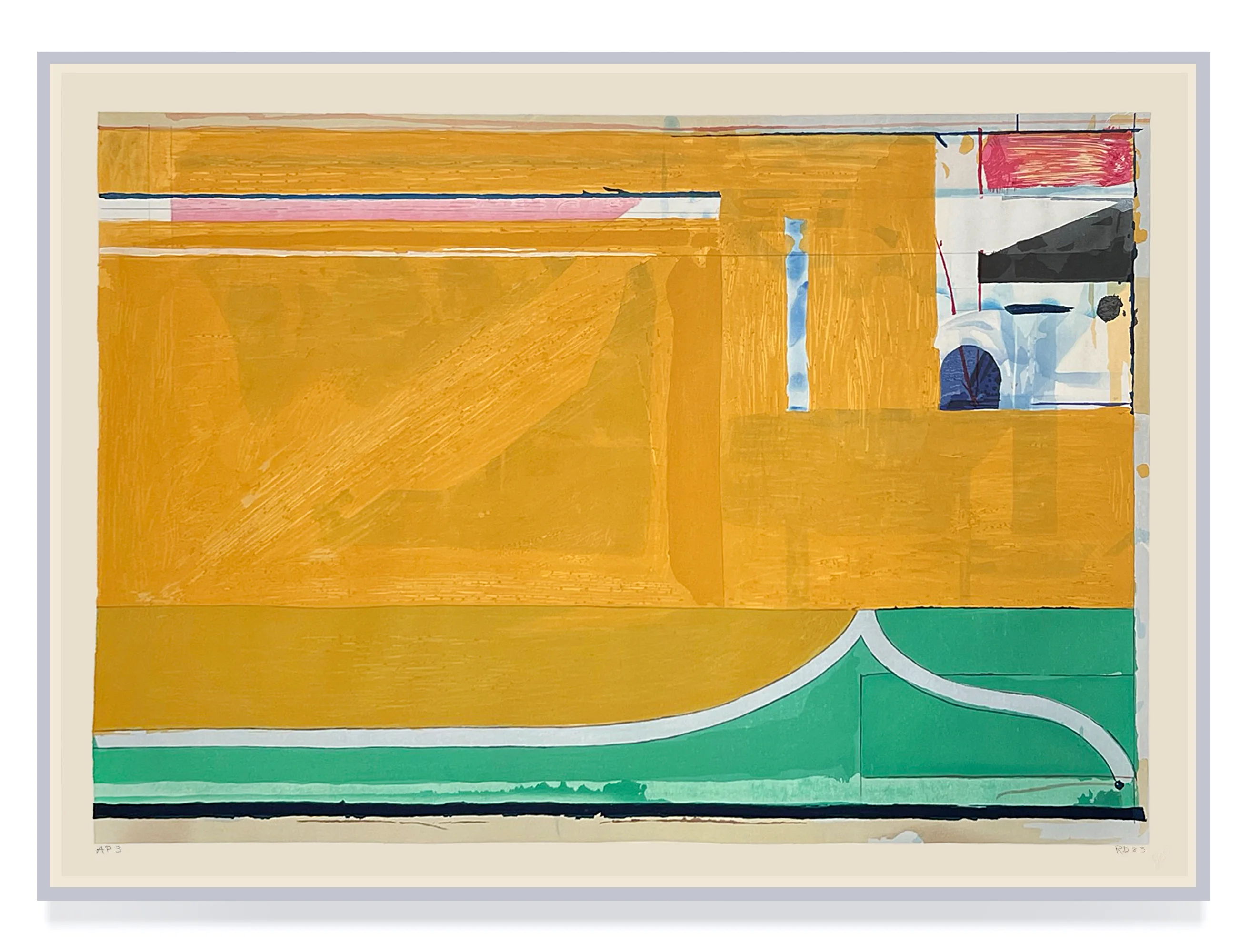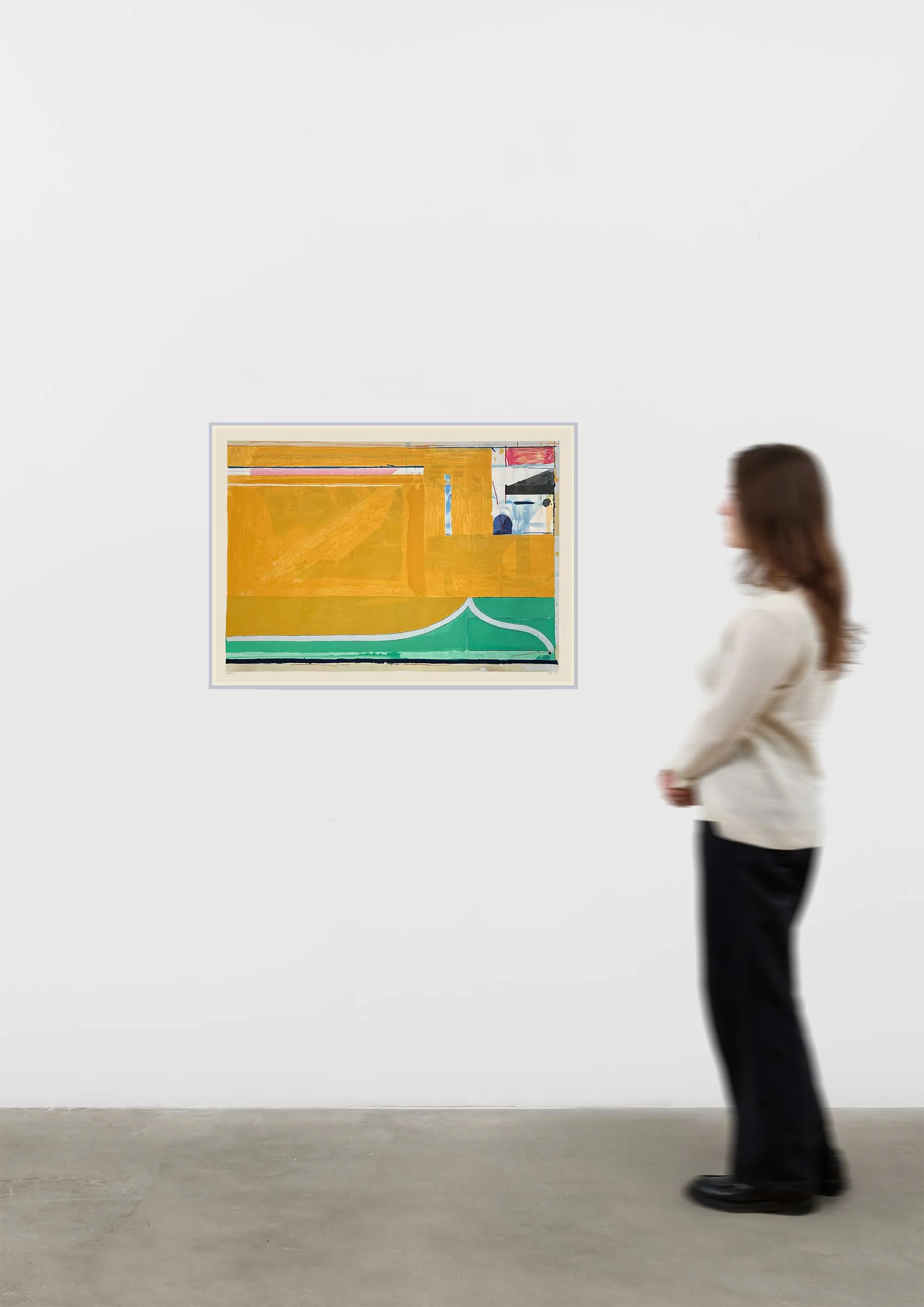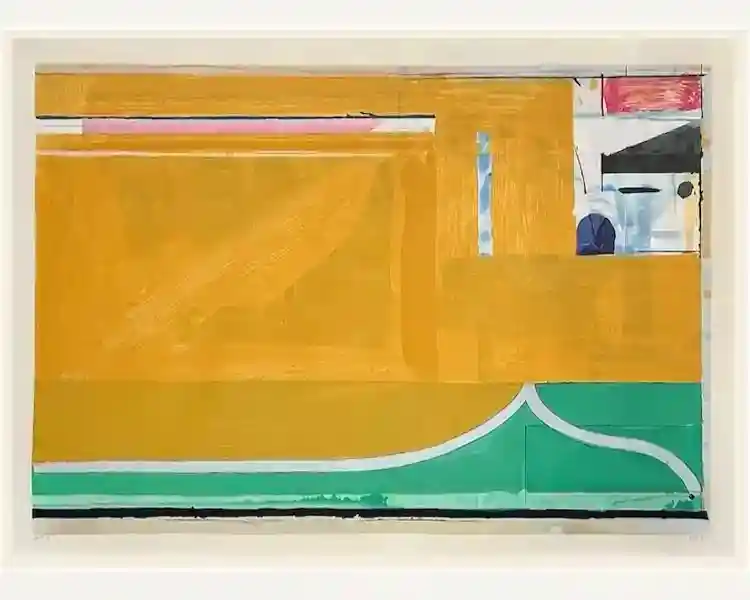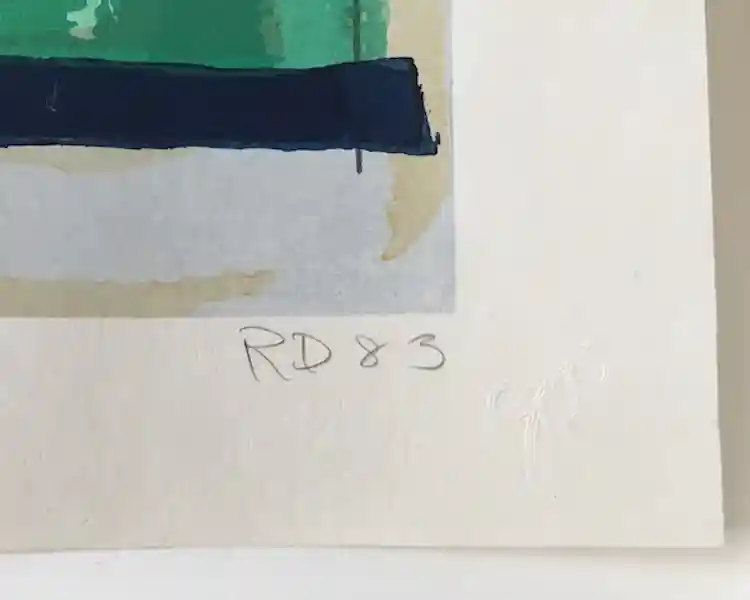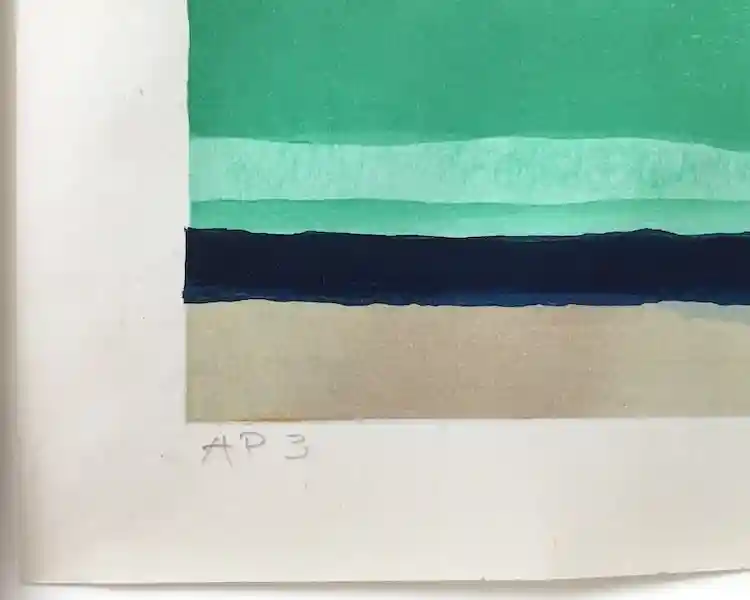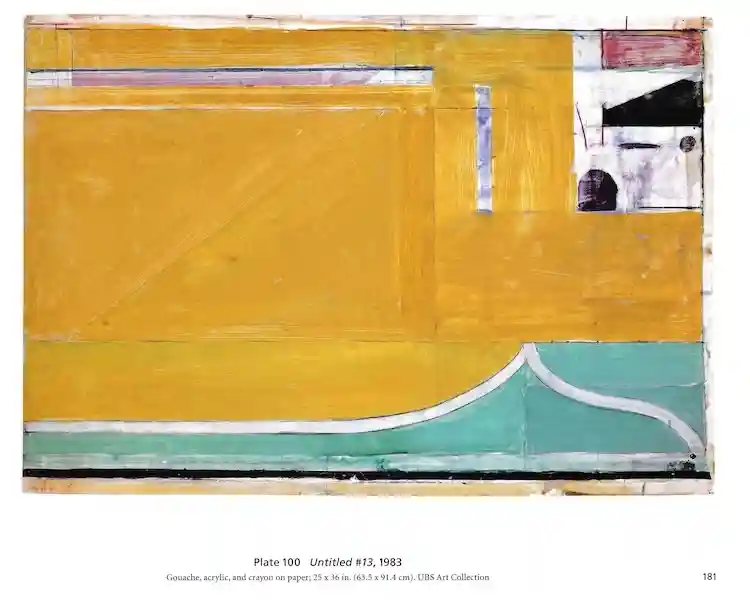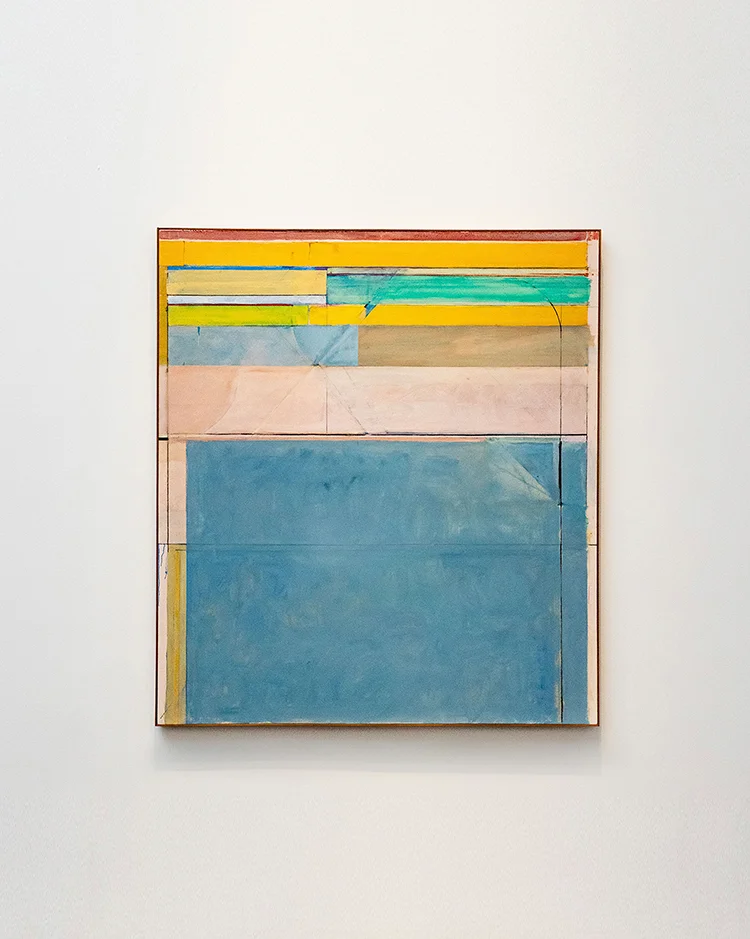Richard Diebenkorn
Ochre, 1983
Color woodcut on Mitsumata paper
sheet: 27 3/8 x 38 1/4 inches
image: 24 7/8 x 35 5/8 inches
frame: 28 1/2 x 39 1/4 inches
Edition of 200 with 20 AP's
signed with initials dated and numbered `RD 83' in pencil lower margin
Published by Crown Point Press, Oakland (with their blindstamp)
Printed by Tadashi Toda
Literature
Richard Diebenkorn Prints 1961-1992, Kathan Brown, 2012, Greenberg Van Doren Gallery, illustrated in full color, pg 39.
Richard Diebenkorn The Ocean Park Series, Sarah C. Bancroft, Prestel, 2011, study for Ochre: Untitled #13, 1983 gouache, acrylic and crayon on paper 25 x 36 inches, illustrated in full color, plate 100 pg. 181
Selected Museum Collections
Art Institute of Chicago, Chicago
San Jose Museum of Art, San Jose
High Museum of Art, Atlanta
sheet: 27 3/8 x 38 1/4 inches
image: 24 7/8 x 35 5/8 inches
frame: 28 1/2 x 39 1/4 inches
Edition of 200 with 20 AP's
signed with initials dated and numbered `RD 83' in pencil lower margin
Published by Crown Point Press, Oakland (with their blindstamp)
Printed by Tadashi Toda
Literature
Richard Diebenkorn Prints 1961-1992, Kathan Brown, 2012, Greenberg Van Doren Gallery, illustrated in full color, pg 39.
Richard Diebenkorn The Ocean Park Series, Sarah C. Bancroft, Prestel, 2011, study for Ochre: Untitled #13, 1983 gouache, acrylic and crayon on paper 25 x 36 inches, illustrated in full color, plate 100 pg. 181
Selected Museum Collections
Art Institute of Chicago, Chicago
San Jose Museum of Art, San Jose
High Museum of Art, Atlanta
